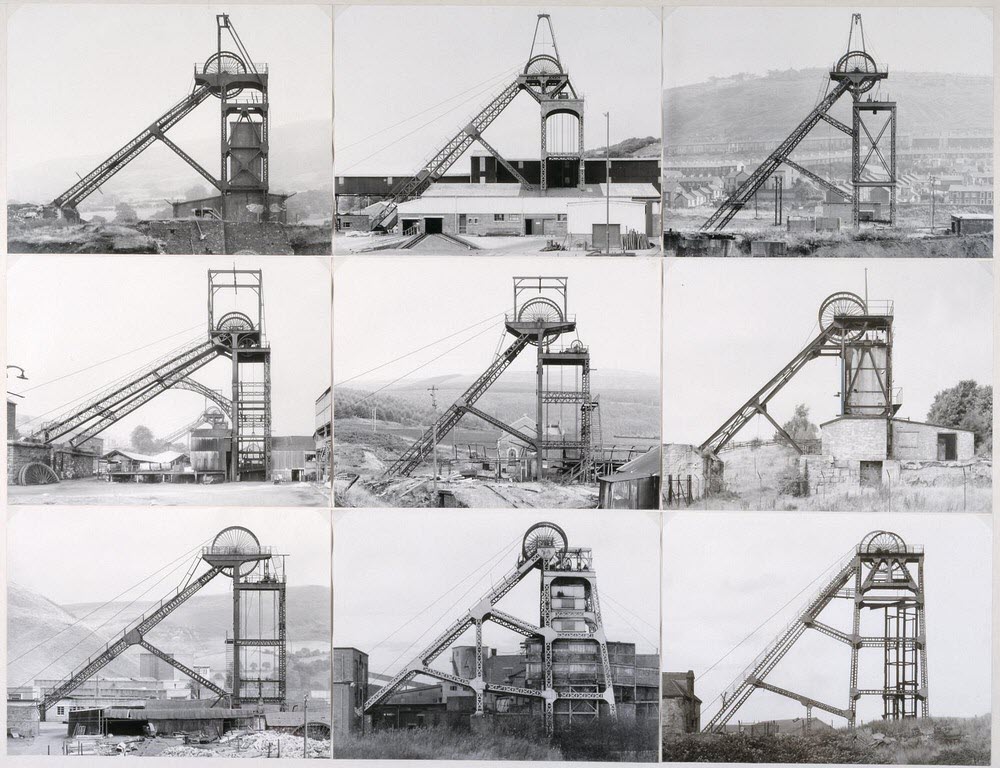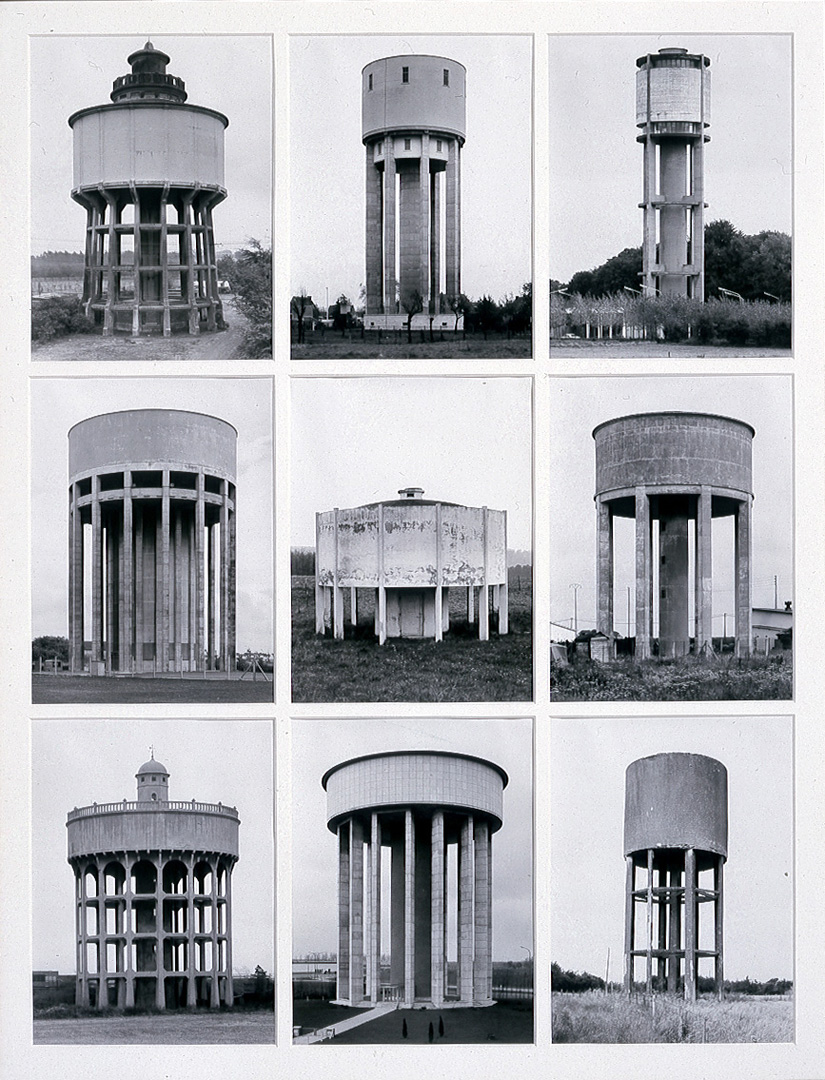
For over 40 years, starting from the early 1960s, German artists Bernd and Hilla Becher photographed over two hundred industrial plants and buildings in Europe and North America. This included everything from water towers, coal bunkers, blast furnaces, gas tanks, coke ovens, oil refineries, grain elevators, storage silos, and warehouses. Each of these structures were photographed in an obsessively formalist way that defined a style and made them one of the most dominant influences in contemporary European photography and art. Most of the structures that the husband-wife duo photographed are now gone making these photographs the only record of the increasingly lost worldof the Industrial Revolution.
Bernd and Hilla Becher met as students at the Kunstakademie Düsseldorf in 1957, and began collaborating two years later when they photographed and documented the disappearing German industrial architecture of the Ruhr Valley, where Becher’s family had worked. The Bechers also photographed outside Germany, mostly in Great Britain, France, Belgium and later in the United States. In 1966, they undertook a six-month journey through England and south Wales, taking hundreds of photographs of the coal industry around Liverpool, Manchester, Sheffield, Nottingham and the Rhondda Valley. In 1974, they traveled to North America for the first time, touring sites in New Jersey, Michigan, Pennsylvania, and southern Ontario, depicting a range of industrial structures, from coal breakers to wooden winding towers.

Gas Tanks.
To maintain uniformity, each photograph was produced using exactly the same setup—a large-format camera positioned directly in front of the structure with a gray, overcast sky as the backdrop. The photographs were presented in a grid, classified by function and types allowing easy comparison between the various specimens.
“The Bechers approached photography the way a botanist might approach the cataloguing of flora and fauna,” wrote The Guardian.
London’s Tate Gallery explains their methodology:
An initial classification was made according to the function of the architectural structure being photographed. This was then subdivided according to the materials used in the structure. Finally, the structures were grouped according to shared characteristics. Bernd Becher described in an interview in 1959 how ‘you can lay the photos alongside one another and realise what they have in common, what is specific to the basic form of a blast furnace or a cooling tower and what is individual variation’
In drawing attention to the cultural dimension of industrial architecture, their work also highlighted the need for preservation of these buildings. On the couple's initiative the Zollern II/IV Colliery at Dortmund-Bovinghausen in the Ruhr, for the most part an art-deco structure, was designated a protected landmark.
Bernd Becher taught photography at the Kunstakademie Düsseldorf where he influenced many students that later made a name for themselves in the photography world, such as Andreas Gursky, Candida Höfer, Thomas Ruff and Thomas Struth.

Winding Towers

Blast Furnaces

Water Towers

Water Towers

Water Towers
No comments:
Post a Comment